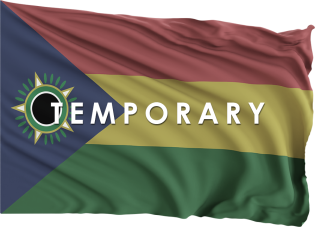Holy See: Difference between revisions
(Page created.) |
mNo edit summary |
||
| (15 intermediate revisions by 3 users not shown) | |||
| Line 1: | Line 1: | ||
{{Nation|image=[[File:TempFlag. | {{Nation|image=[[File:TempFlag Waving.png|center|315px]]|name=Holy See|area=* 1 Star System|capital=[[Vaticanae Planetary System|Vaticanae System]]|languages=*Latin (Official) | ||
*Italian (Official) | |||
*LIS (Italian Sign Language)|independence=*Apostolic See | |||
1st Century CE | |||
*Donation of Pepin | |||
756 | |||
*Papal States Codified | |||
781 | |||
*Lateran Treaty | |||
11 February 1929|independence-title=Sovereignty|other-names=''Sancta Sedes'' (Latin) | |||
''Santa Sede'' (Italian)|classification=[[Small Power]]|lon-status=* [[League of Nations|Member State]]|roundel=[[File:HolySeeRoundel.png|center|90px]]}} | |||
The '''Holy See''', also called the '''See of Rome''', '''Petrine See''', or '''Apostolic See''', is the central governing body of the Catholic Church. It encompasses the office of the pope as the bishop of the Apostolic episcopal see of Rome and serves as the spiritual and administrative authority of the armwide Catholic Church. The Holy See is a [[Small Power]], a [[Legacy Nation]], and a member of the [[League of Nations]]. | |||
== History == | |||
=== Pre-First Scinfaxi War === | |||
According to Catholic tradition, the apostolic see of Diocese of Rome was established in the 1st century by the Catholic saints Peter and Paul. The legal status of the Catholic church and its property was recognized by the Edict of Milan in 313, and it became the state church of the Roman Empire by the Edict of Thessalonica in 380. After the fall of the Western Roman Empire in 476, the temporal legal jurisdiction of the papal primacy was further recognized as promulgated in Canon law. | |||
The Papal States held extensive territory and armed forces from 756–1870. The Pope's temporal power peaked around the time of the papal coronations of the emperors of the Holy Roman Empire from 858, and the ''Dictatus papae'' in 1075. Several modern states still trace their own sovereignty to recognition in medieval papal bulls. | |||
The sovereignty of the Holy See was retained despite multiple sacks of Rome during the Early Middle Ages, an exiled Avignon Papacy during 1309–1376, and occupation under the "Roman Republic" from 1798 to 1799. The Capture of Rome in 1870 by the Kingdom of Italy and the Roman Question during the Savoyard era ultimately resulted in the Lateran Treaty between the Holy See and [[Italian Social Republic|Italy]] - which recognized Vatican City as an independent city-state. | |||
=== First Scinfaxi War === | |||
Much of Vatican City was destroyed during the First Scinfaxi War. Restoration of surviving relics, such as the Constantine Shard, is ongoing. | |||
== References == | |||
# [https://www.champlain.group/news/vatican-unveils-restored-shard-of-16th-century-masterpiece "Vatican Unveils Restored Shard of 16th Century Masterpiece"]. ''Champlain Group''. | |||
Latest revision as of 19:52, 25 May 2025
The Holy See, also called the See of Rome, Petrine See, or Apostolic See, is the central governing body of the Catholic Church. It encompasses the office of the pope as the bishop of the Apostolic episcopal see of Rome and serves as the spiritual and administrative authority of the armwide Catholic Church. The Holy See is a Small Power, a Legacy Nation, and a member of the League of Nations.
History
Pre-First Scinfaxi War
According to Catholic tradition, the apostolic see of Diocese of Rome was established in the 1st century by the Catholic saints Peter and Paul. The legal status of the Catholic church and its property was recognized by the Edict of Milan in 313, and it became the state church of the Roman Empire by the Edict of Thessalonica in 380. After the fall of the Western Roman Empire in 476, the temporal legal jurisdiction of the papal primacy was further recognized as promulgated in Canon law.
The Papal States held extensive territory and armed forces from 756–1870. The Pope's temporal power peaked around the time of the papal coronations of the emperors of the Holy Roman Empire from 858, and the Dictatus papae in 1075. Several modern states still trace their own sovereignty to recognition in medieval papal bulls.
The sovereignty of the Holy See was retained despite multiple sacks of Rome during the Early Middle Ages, an exiled Avignon Papacy during 1309–1376, and occupation under the "Roman Republic" from 1798 to 1799. The Capture of Rome in 1870 by the Kingdom of Italy and the Roman Question during the Savoyard era ultimately resulted in the Lateran Treaty between the Holy See and Italy - which recognized Vatican City as an independent city-state.
First Scinfaxi War
Much of Vatican City was destroyed during the First Scinfaxi War. Restoration of surviving relics, such as the Constantine Shard, is ongoing.
References
- "Vatican Unveils Restored Shard of 16th Century Masterpiece". Champlain Group.

